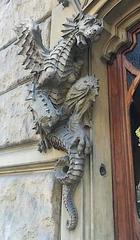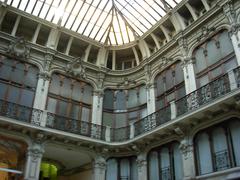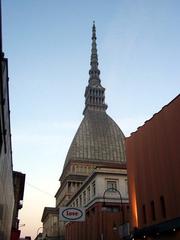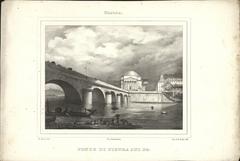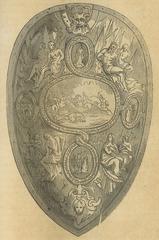Castello dei Mosetti: Visiting Hours, Tickets, and Comprehensive Guide to Chieri’s Medieval Heritage
Date: 14/06/2025
Introduction
Castello dei Mosetti is a remarkable fortified farmhouse (casaforte) nestled in the scenic Piedmont region near Chieri and Cambiano. A testament to the area’s medieval and feudal past, the castle stands as an evocative symbol of rural defense, noble influence, and agricultural development. Though privately owned and not generally open to the public, its commanding architecture and rich history make it a key landmark for those interested in exploring Piedmont’s unique cultural landscape.
This guide offers a detailed overview of Castello dei Mosetti’s origins, architectural features, ownership history, and visitor information. It also provides practical travel tips, highlights neighboring attractions, and shares authoritative sources for further research and virtual exploration.
Table of Contents
- Introduction & Historical Context
- Historical Overview
- Architectural Features
- Cultural and Historical Significance
- Visitor Information
- Travel Tips & Nearby Attractions
- Frequently Asked Questions (FAQs)
- Preservation, Research, and Community Engagement
- Conclusion & Planning Resources
- Sources
Historical Overview
Medieval Origins & Early Development
Castello dei Mosetti’s origins trace back to the 13th century, a time of territorial disputes and regional power struggles in Piedmont. The site was first recorded in the Chieri land registers (catasti) of 1275 as a Gribaudi family property. By 1366, under the name “Moxatos,” it appeared consistently among the rural settlements of Chieri (Carreum Potentia; Archeocarta). Its strategic location on the “via Alta” route gave it a significant role in controlling the fertile lands and waterways south of Chieri, underscoring its early defensive and agricultural functions.
Architectural Evolution & Defensive Role
Primarily a fortified farmhouse rather than a classic castle, Castello dei Mosetti features a quadrangular plan with a small central courtyard, surrounded by three two-story wings and a taller wing topped by a loggia and patrol walkway (Parrocchia Cambiano). The robust brick masonry, original quadrangular tower (mastio) with a sloped roof, and defensive elements such as arrow slits and thick walls reflect its initial purpose as a rural stronghold. Over the centuries, renovations softened its military character, adapting it for agricultural use while retaining several medieval features.
Ownership & Feudal Context
Ownership of Castello dei Mosetti reflects the shifting feudal landscape of Piedmont. After the Gribaudi family, the estate passed to the Broglia family in the 15th century and later, in the 18th century, to the Levrotto family (Archeocarta). Its history is deeply intertwined with the nearby Mosi complex and the broader feudal system, where fortified estates played vital roles in both defense and agricultural management.
Decline & Modern Status
As the need for rural fortifications declined, Castello dei Mosetti experienced gradual transformation and partial disrepair. Today, it remains privately owned, with its medieval elements mostly altered by later renovations. However, the building’s profile, original tower, and strategic setting on elevated ground still offer a tangible sense of its historic functions.
Architectural Features
Exterior Architectural Elements
- Quadrangular Layout: A closed rectangular plan with three wings of two stories and a fourth, taller wing.
- Central Courtyard: Surrounded by arcaded walkways and brick columns, with a historic well at the center.
- Tower (Mastio): Original quadrangular tower adjacent to the main gate, featuring a single-pitched roof and defensive architecture reminiscent of regional “torri-porta.”
- Brick Masonry: Typical of late medieval construction in Piedmont, with robust walls, narrow windows (embrasures), and remnants of machicolations.
Interior & Defensive Aspects
While interior access is not permitted, historical sources describe features such as:
- Defensive Staircases: Including a tower staircase leading to an 18th-century loggia.
- Private Chambers & Chapel: Upper floors once housed private living quarters and a family chapel, elements now largely obscured by renovations.
- Defensive Features: Arrow slits, murder holes, and thick doors, some of which are still visible from the exterior.
Decorative & Artistic Elements
- Frescoes & Stucco Work: Faded frescoes, heraldic carvings, and ornamental stucco decorations survive in some parts, reflecting the estate’s evolution from military stronghold to noble residence.
- Outbuildings: Former stables and storage rooms, now serving as exhibition spaces during rare public events.
Cultural and Historical Significance
Castello dei Mosetti is a powerful emblem of Piedmont’s feudal era, representing the intersection of defense, agriculture, and noble patronage. Its presence, along with similar fortified complexes like Castello dei Mosi, Fontaneto, and Ponticelli, highlights the historical need for rural protection amid water-rich and contested territories (Archeocarta). The estate’s connections to prominent families and ecclesiastical institutions underscore its cultural and genealogical influence—Saint John Bosco’s great-grandmother was born at the Mosi, further tying the site to regional identity (Parrocchia Cambiano).
Visitor Information
Visiting Hours & Tickets
- Interior Access: Not open to the public. There are no regular tours or ticket sales for Castello dei Mosetti.
- Exterior Viewing: Visitors may view the castle from public roads and designated viewpoints during daylight hours. Please respect private property and do not trespass (Archeocarta).
Location & Accessibility
- Address: Mosetti hamlet, Chieri, Metropolitan City of Turin, Piedmont, Italy.
- Directions: From Turin, take the SP143 toward Chieri, then follow signs to Cambiano and Borgata dei Mosetti. GPS: 44°58’3” N, 7°47’49.81” E (Italia Italy).
- Parking: Public parking is available in the hamlet and along the SS29 Torino-Alba road. Camper parking is also accessible nearby.
Visitor Etiquette
- Do not enter private property.
- Limit photography to public access areas.
- Maintain respect for the tranquility and rural character of the site.
Travel Tips & Nearby Attractions
- Combine Your Visit: Pair your trip to Castello dei Mosetti with nearby sites such as:
- Castello dei Mosi: A similar medieval casaforte just a few hundred meters away.
- Fontaneto and Ponticelli: Other historic hamlets with fortified remains.
- Chieri Town Center: Rich in medieval towers, churches, and lively markets (Italia Italy).
- Local Events: Occasionally, cultural associations like Carreum Potentia organize guided tours or educational events focused on Chieri’s architectural heritage (Carreum Potentia).
- Accommodation: Chieri offers a range of hotels, B&Bs, and agriturismi with easy access to regional sites.
Frequently Asked Questions (FAQs)
Q: Can I visit the interior of Castello dei Mosetti?
A: No. The castle is private property and closed to public interior visits.
Q: What are the official visiting hours?
A: The exterior can be viewed from public roads during daylight hours; there are no official visiting hours.
Q: Are there guided tours?
A: No regular tours are available, but local associations occasionally organize heritage walks in the area.
Q: Is there an entrance fee?
A: No. There are no tickets or entrance fees as the site is not open to public visits.
Q: Where can I park?
A: Public parking is available near the Mosetti hamlet and along major roads.
Q: Are facilities available nearby?
A: Services including restaurants and accommodations can be found in Chieri.
Preservation, Research, and Community Engagement
Castello dei Mosetti is recognized in regional inventories and the “Atlante castellano” as a site of historical interest. Local groups like GAT (Gruppo Archeologico Torinese) and Carreum Potentia promote research and occasional educational events. Restoration efforts focus on preservation rather than public adaptation, given its private status (Carreum Potentia).
Conclusion & Planning Resources
Although direct access to Castello dei Mosetti is restricted, its silhouette and storied past offer a captivating glimpse into Piedmont’s medieval history. For a richer experience, combine your visit with explorations of Chieri’s town center and other nearby fortified hamlets. To stay informed about special events or public initiatives, follow local tourism platforms and consider downloading the Audiala app for personalized itineraries and updates.
Sources
- Carreum Potentia – Castello dei Mosetti Mossati, 2024
- Archeocarta – Cambiano to Castello Mosetti, 2024
- Parrocchia Cambiano – Castelli dei Mosi e dei Mosetti, 2024
- Italia Italy – Chieri, 2024
For virtual tours, images, and updates on Chieri historical sites, visit the resources above and the Audiala app.

